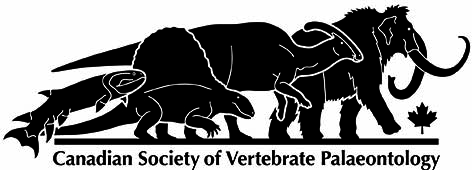Caenagnathids of the Dinosaur Park Formation (Campanian) of Alberta, Canada: anatomy, osteohistology, taxonomy, and evolution
DOI:
https://doi.org/10.18435/vamp29362Keywords:
Late Cretaceous, Dinosaur Park Formation, Theropoda, Oviraptorosauria, CaenagnathidaeAbstract
Our understanding of caenagnathid anatomy, diversity, and ecology has improved considerably in the past twenty years, but numerous issues still remain. Among these, the diversity and taxonomy of caenagnathids from the Dinosaur Park Formation of Alberta, Canada, have remained problematic. Whereas some authors recognize three genera, others suggest only two were present, and there is considerable disagreement about which specimens are referable to which genus. This study aims to resolve this issue by reviewing the known specimens and using osteohistology, to establish a testable taxonomic framework of Dinosaur Park Formation caenagnathids. Numerous new specimens from all regions of the skeleton provide insight into morphological variation in caenagnathids, and three morphotypes are recognized based on a combination of morphological features and body size. Osteohistology shows that representatives in each body size class are at skeletal maturity, and therefore supports the delineation of three taxa: the smaller Citipes elegans gen. nov., the intermediate Chirostenotes pergracilis, and the larger Caenagnathus collinsi, new material of which shows it rivalled Anzu wyliei in size. However, these analyses also raise concerns about the referral of isolated material to each taxon in the absence of skeletal overlap between specimens or osteohistological analysis. Caenagnathids are consistently recovered throughout the Dinosaur Park Formation interval, and two geographic clusters of increased abundance probably reflect collection and taphonomic biases. The coexistence of three taxa was apparently facilitated by differences in both adult body size and functional morphology of the dentary and pes, which suggests that caenagnathids minimized niche overlap rather than subdividing niche space. Regardless, little is known of the exact roles caenagnathids played in Late Cretaceous ecosystems. Incorporation of the new material and taxonomic framework into a phylogenetic analysis drastically improves our understanding of the relationships between caenagnathines, and sheds light on the evolution of body size in caenagnathids and its role in their diversification.
Downloads
Downloads
Additional Files
Published
How to Cite
Issue
Section
License
Copyright (c) 2020 Gregory Funston

This work is licensed under a Creative Commons Attribution 4.0 International License.
Submission of an article to Vertebrate Anatomy Morphology Palaeontology will be taken to mean that the article is an original work and not previously published or under consideration for publication elsewhere.
If the article is accepted for publication, it will be published on-line under Creative Commons Attribution 4.0 International (CC By 4.0) meaning:
Attribution — You must give appropriate credit, provide a link to the license, and indicate if changes were made. You may do so in any reasonable manner, but not in any way that suggests the licensor endorses you or your use.
No additional restrictions — You may not apply legal terms or technological measures that legally restrict others from doing anything the license permits.







